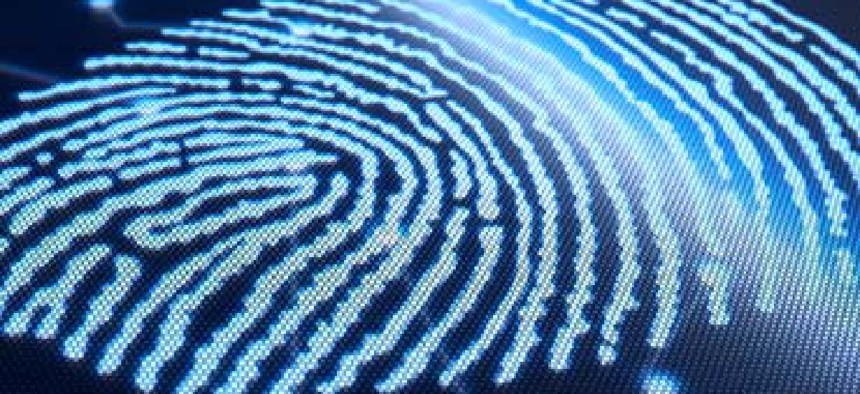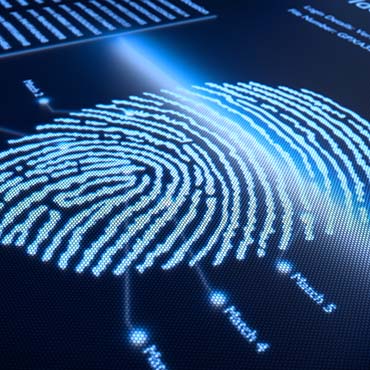Biometric database, software inventory, smallpox and a prescreening milestone

News and notes from around the federal IT community.

DOD biometric database passes customer test
An updated version of the Defense Department's Automated Biometric Identification System, a database of fingerprints and other information for tracking foreign threats, passed a customer test in March and is set for an operational test in the fall, the project's leaders said July 9.
ABIS makes fingerprint, palm print, iris and facial data available to U.S. military commanders, DOD agencies, and other federal and international partners, the DOD biometrics team said in a statement.
The updated ABIS 1.2 will be able to handle 30,000 transactions a day and hold more than 18 million records; the current version processes 15,000 daily transactions and holds 10 million records, the announcement states. DOD introduced the current database in 2009.
"These capabilities are necessary tools for the warfighter and for our interagency partners to be able to deprive our enemies of anonymity," said Col. Sandy Vann-Olejasz, project manager for DOD's biometrics program.
The Department of Homeland Security and the FBI were among the federal agencies that participated in the customer test of ABIS 1.2, which was launched last August but sent back to the drawing board because of customer-identified deficiencies.
Pentagon software inventory meets requirements
The Defense Department's plan to collect inventory data meets all statutory requirements prescribed by Congress, the Government Accountability Office said in a report released July 8.
The defense authorization act for fiscal 2013 required DOD to come up with a plan for a departmentwide inventory for selected software licenses.
According to GAO, DOD is required to identify and explain software licenses it has chosen and summarize those it did not choose; offer a comparison of purchased licenses against installed licenses; describe how the department will assess its need for selected software licenses over the two fiscal years after the plan is issued; and describe how the department can achieve the greatest economies of scale and cost savings in the procurement, use and optimization of selected software licenses.
DOD plans to spend at least $31 billion on IT products and services in fiscal 2014, including software licenses, according to GAO. The department's effective management of software licenses can help it avoid buying too many of them, the report states.
Smallpox no threat to NIH contracting operations
Officials at the National Institutes of Health said the discovery of old vials of smallpox on the NIH campus won't affect the agency's governmentwide IT contracting or internal IT operations at the facility.
NIH informed the Centers for Disease Control and Prevention on July 1 it that its employees had discovered vials labeled "variola," commonly known as smallpox, in an unused portion of a storage room in a Food and Drug Administration laboratory on NIH's Bethesda, Md., campus.
NIH spokeswoman Renate Myles told FCW that the vials were found in a refrigerated storage room in Building 29A and added that the discovery would not affect the operations of the NIH IT Acquisition and Assessment Center. NITAAC administers governmentwide acquisition contracts that sell IT gear and services to federal users.
In a July 8 statement, CDC officials said that when the vials were found, they were still sealed and posed no health threat. They added that on-site biosafety personnel did not identify any infectious exposure risk to lab workers or the public. The vials, which could date from the 1950s, were first secured in a CDC-registered select agent containment laboratory in Bethesda and then sent to the agency's high-containment laboratory in Atlanta to see if the virus was still living.
According to CDC, the laboratory was among those transferred from NIH to FDA in 1972, along with the responsibility for regulating biological products. CDC said the FDA has operated laboratories on the NIH campus since then. Scientists discovered the vials while preparing for the laboratory's move to the FDA's main campus.
CDC and the FBI are investigating how the vials came to be stored in the NIH facility.
DHS' prescreening program hits membership milestone
The Department of Homeland Security's program to ease border crossings for low-risk travelers between the U.S. and Canada signed up its millionth member on July 8, according to the agency.
The NEXUS program launched in 2000 as a joint effort between U.S. Customs and Border Protection and the Canada Border Services Agency. It allows prescreened travelers to proceed with little or no delay into the U.S. and Canada. CBP officials said the program encourages cross-border travel and supports the American and Canadian economies.
NEXUS members can also use CBP's Global Entry automated kiosks at participating airports.


